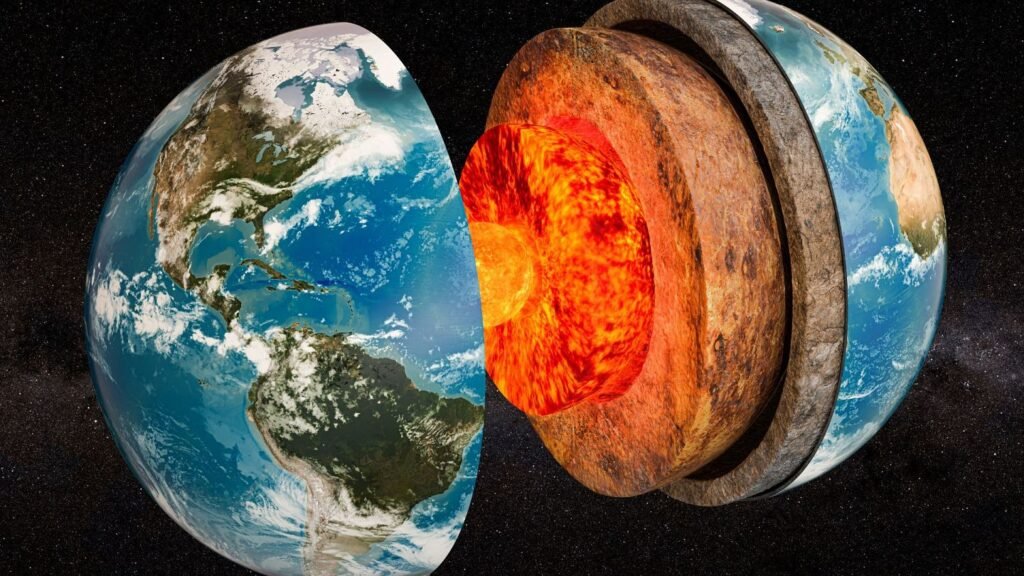Inner Core of the Earth

A recent study says that the inner core of Earth seems to have stopped spinning in the same direction as the rest of the planet.
About the Inner core of the Earth:
- It is the innermost layer of the Earth.
Structure:
-
- It is a solid metallic ball made mainly of iron.
- The inner core is solid due to the pressure caused by the weight put on it by the Earth’s other top layers.
- It is distinct from the outer core, which is a liquid.
Radius:
-
- The inner core has an average radius of 1220 km.
- The boundary between the inner and outer cores is located at approximately 5150 km below the surface of the Earth.
- This boundary is called the Lehman Seismic Discontinuity.
- Temperature: Inner core temperatures reach extraordinary levels, estimated to be between 7,200–8,500ºF (4,000–4,700ºC).
Properties:
-
- It is predicted to have very high thermal and electrical conductivity.
- The inner core generates its own magnetic field and spins a bit faster than the rest of the planet.
What are the three layers of Earth?
- The earth is made up of three different layers: the crust, the mantle and the core.
- The crust: This is the outside layer of the earth and is made of solid rock, mostly basalt and granite.
- The mantle: It lies below the crust and is up to 2900 km thick. It consists of hot, dense, iron and magnesium-rich solid rock.
- The core: It is the center of the earth and is made up of two parts: the liquid outer core and solid inner core. The outer core is made of nickel, iron and molten rock.